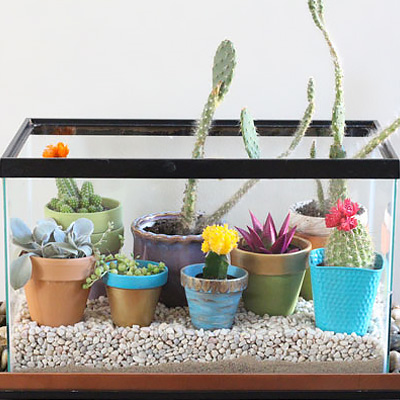How to Build a Fish Tank with a Kids Workshops Kit
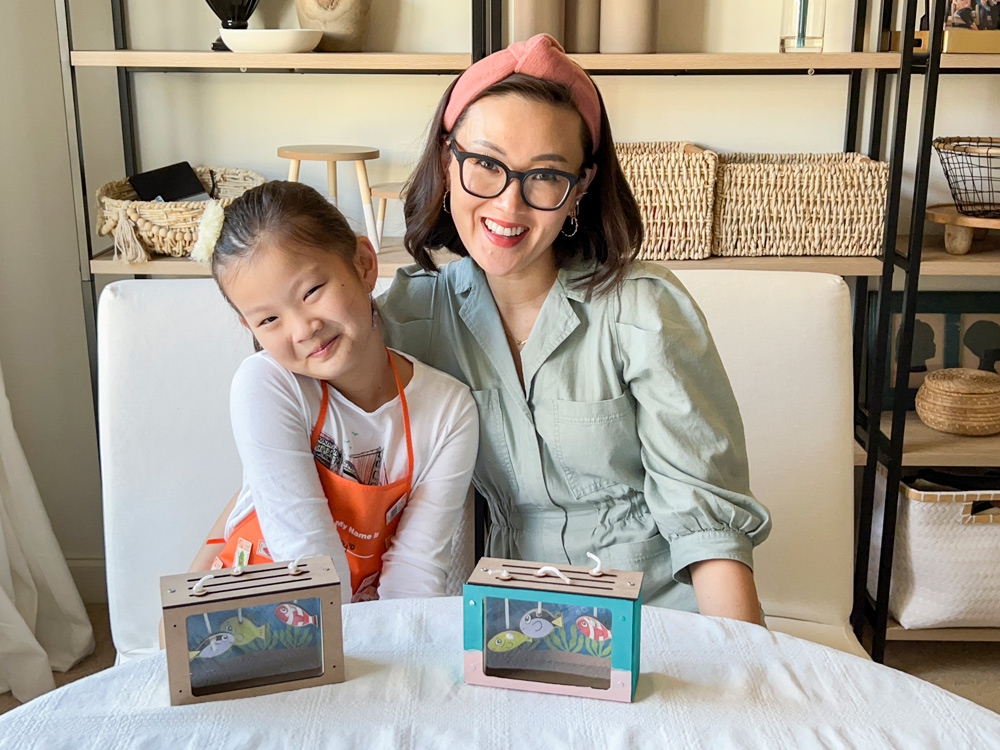
Last updated August 21, 2024

Yuni is a Korean- American raised in the South who loves all things designing, DIY-ing, and cooking. On her blog, Love Your Abode, you can find about interior design inspiration, home remodel makeovers, and recipes.
A Note From The Home Depot
Dive under the sea with a fun fish tank Kids Workshop Kit from The Home Depot. Follow along as Yuni Min of Love Your Abode learns about aquatic life with her family, then head to your local Home Depot and grab one of your own!
Table of Contents
How to Build a Fish Tank
Gather Tools and Materials
Step 1: Start the Assembly
Step 2: Attach the Back Piece
Step 3: Add the Stickers
Step 4: String the Fish
How to Build a Fish Tank
Keep your kids engaged with a Home Depot Kids Workshop Kit. You can pick one up from your local store on the first Saturday of the month or purchase one online at HomeDepot.com/kids. The monthly kits encourage your child to build and create really cool projects in less than an hour. This month, we are building a fish tank!
Emmy and I had so much fun building this fish tank together for this month’s kids workshop. We also learned about which sea creatures live in the different zones in the ocean. I assisted her with a few details but gave her freedom to build and create on her own.

Gather Tools and Materials
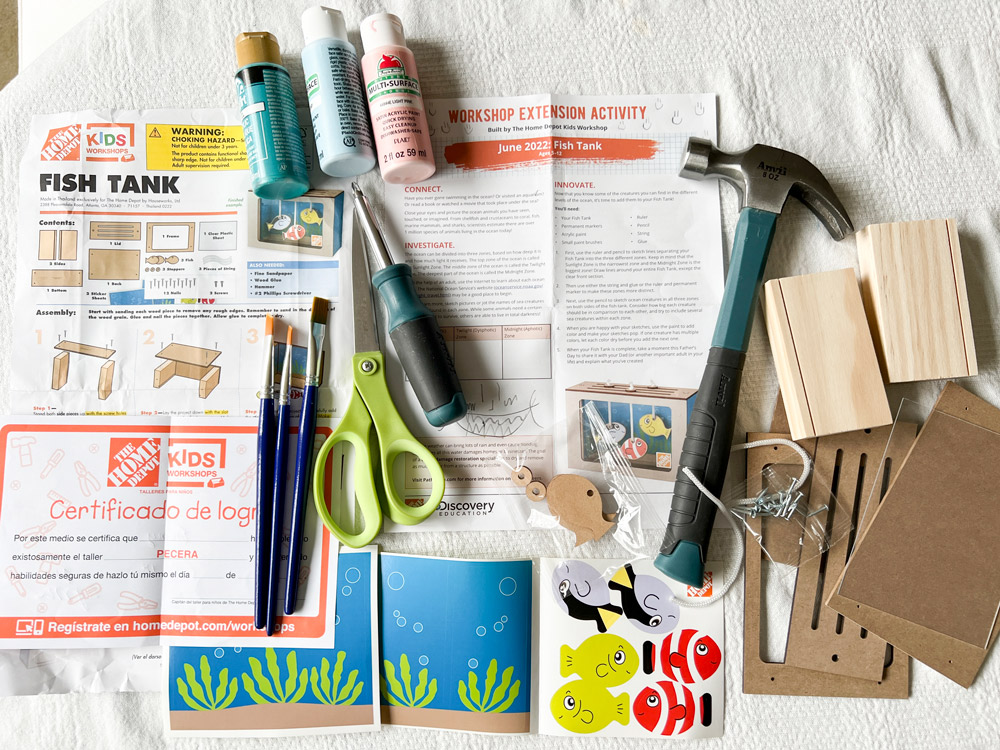
All of these items can be found at The Home Depot. The great thing is almost everything you need is already included in the workshop kit along with easy-to-follow instructions.
Step 1: Start the Assembly
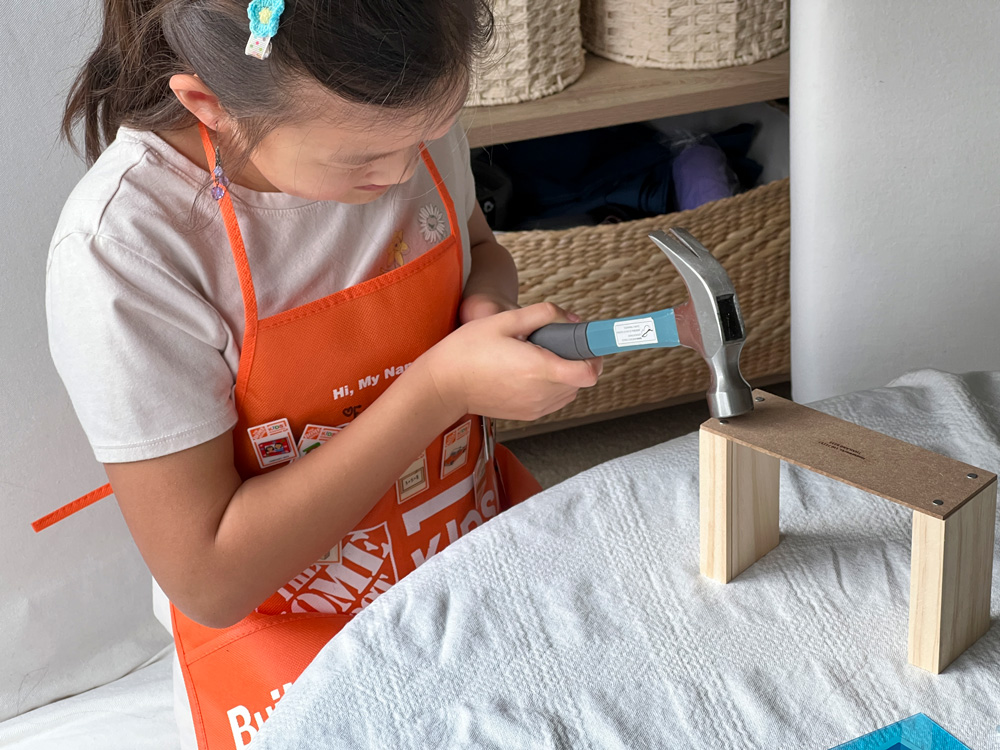
First, stand both side pieces up with the screw holes facing down and the slots facing in. Make sure the outside edges are even. Nail them together with four nails.
Step 2: Attach the Back Piece
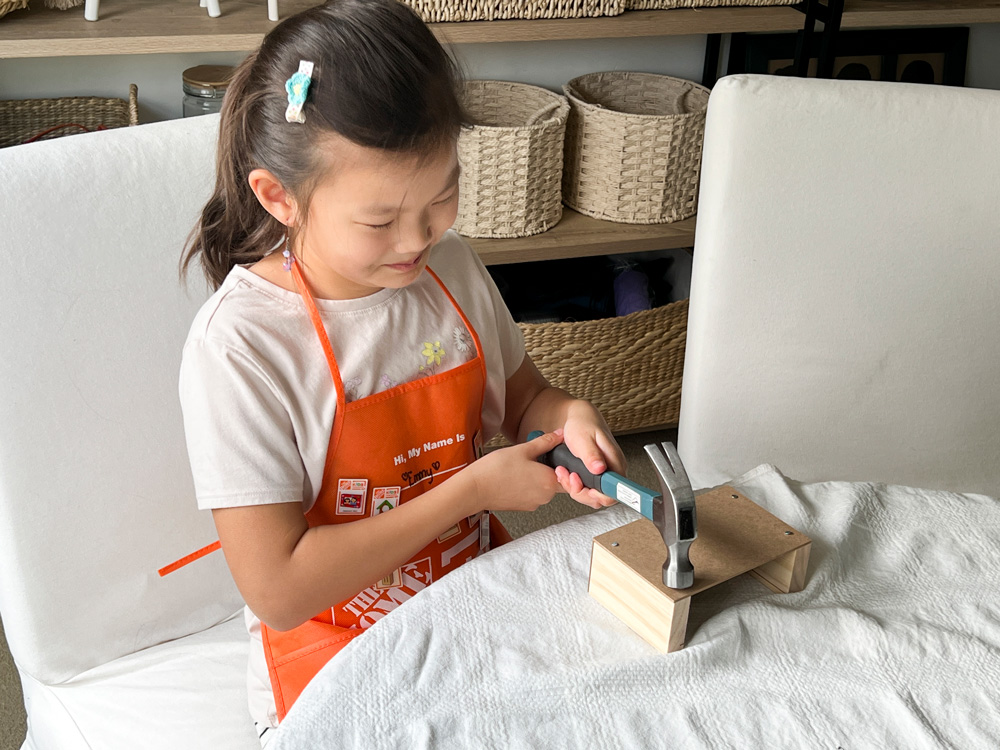
Lay the project down with the slot edge down. Make sure the outside edges are even. Nail them together with four nails.
Step 3: Add the Stickers
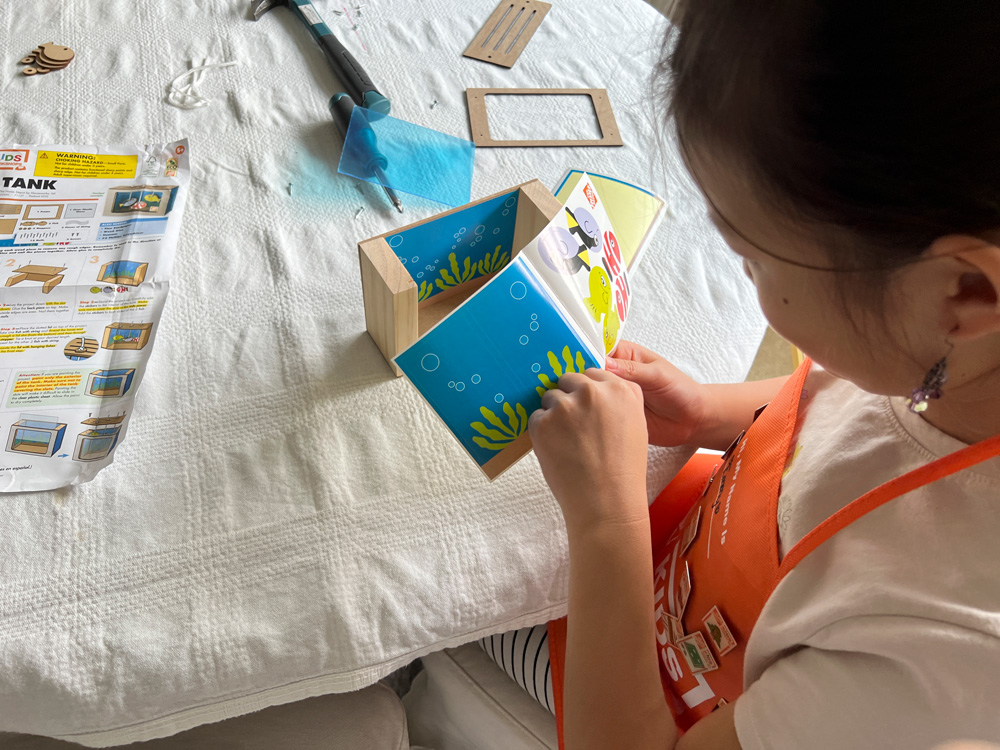
Stand the project up. Carefully add the stickers to the interior of the tank. Make sure not to cover the slots in the side pieces.

Add the stickers to both sides of the three fish.
Step 4: String the Fish
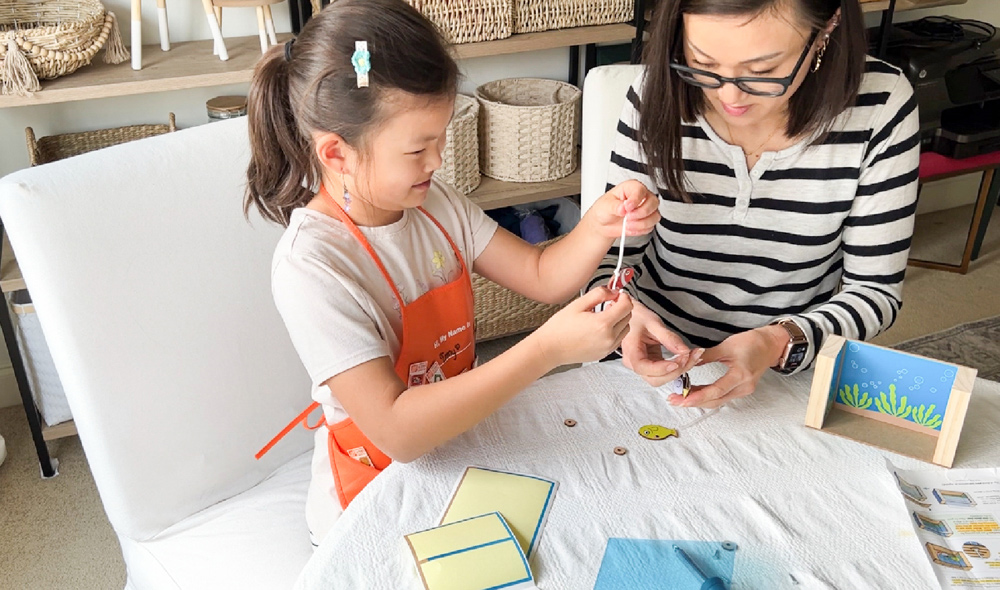
Thread one piece of string through the hole of one fish and tie the end. Repeat for the other two fish
Step 5: Attach Fish String to Slotted Lid
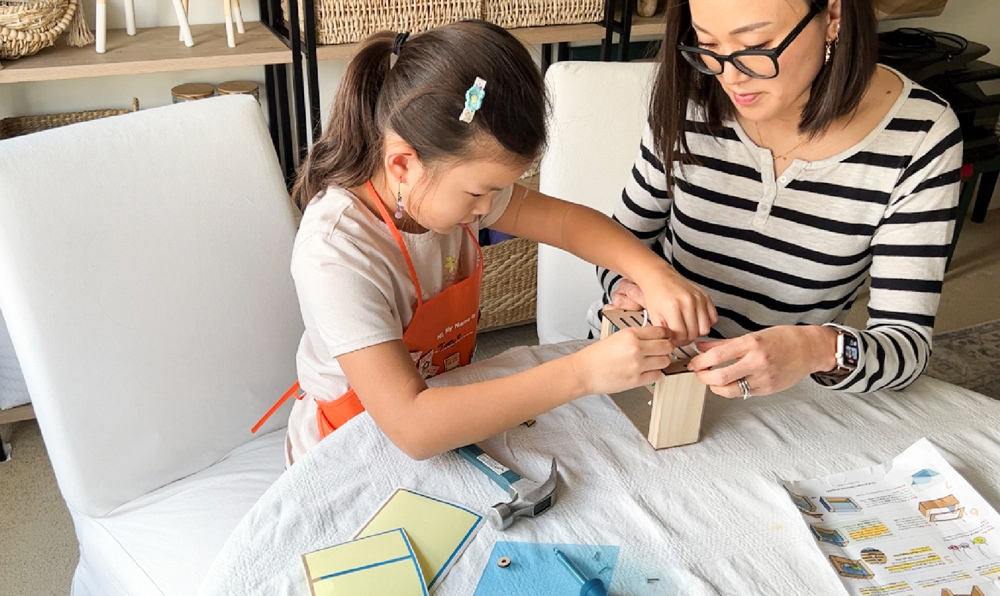
Place the slotted lid on top of the project. Take one fish with string and thread the loose end through a lid slot (from the bottom) and then through a stopper. Tie a knot at your desired length. Repeat for the other two fish with string.
Set aside the lid with hanging fish until the final step.
Step 6: Attach the Frame

Lay the project down with the open front facing up. Make sure the outside edges are even. Nail it in place with four nails.

If you are painting the project, paint only the exterior of the tank. Make sure not to paint the interior of the tank covering the slots. Painting the slots will make it difficult to slide in the clear plastic sheet. Allow the paint to dry completely
Step 7: Install the Lid
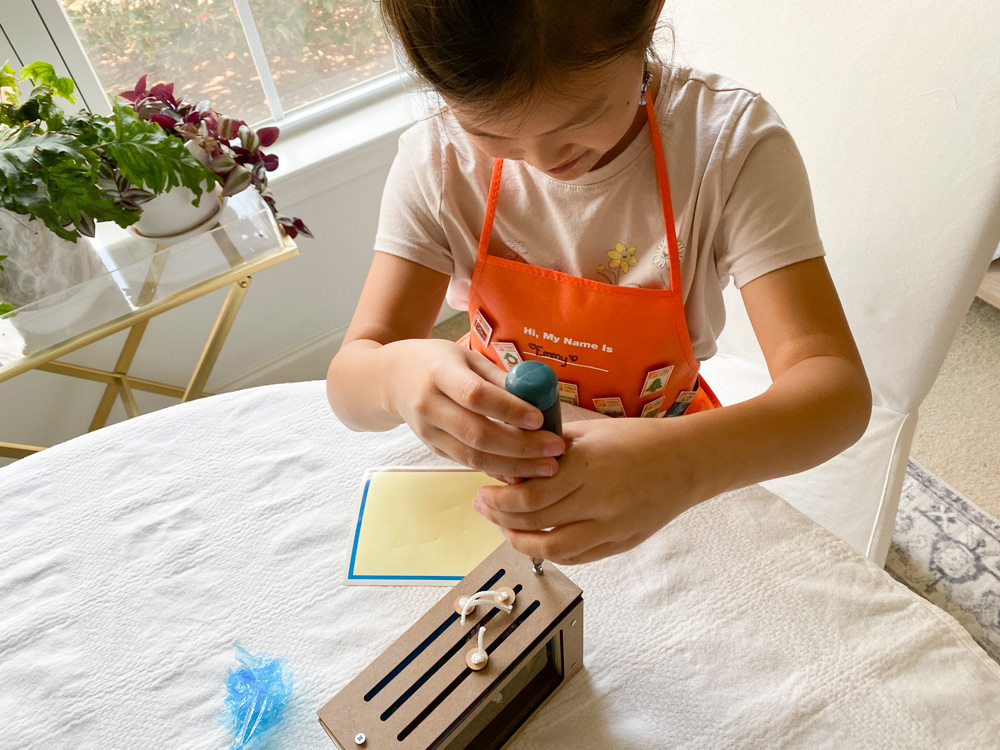
Peel off the blue protective sheets from both sides of the clear plastic sheet. Slide it into the slots. Place the lid with hanging fish on top of the tank. Using a #2 Philips Screwdriver, attach it with two screws. Feel free to cut the excess string at top if desired
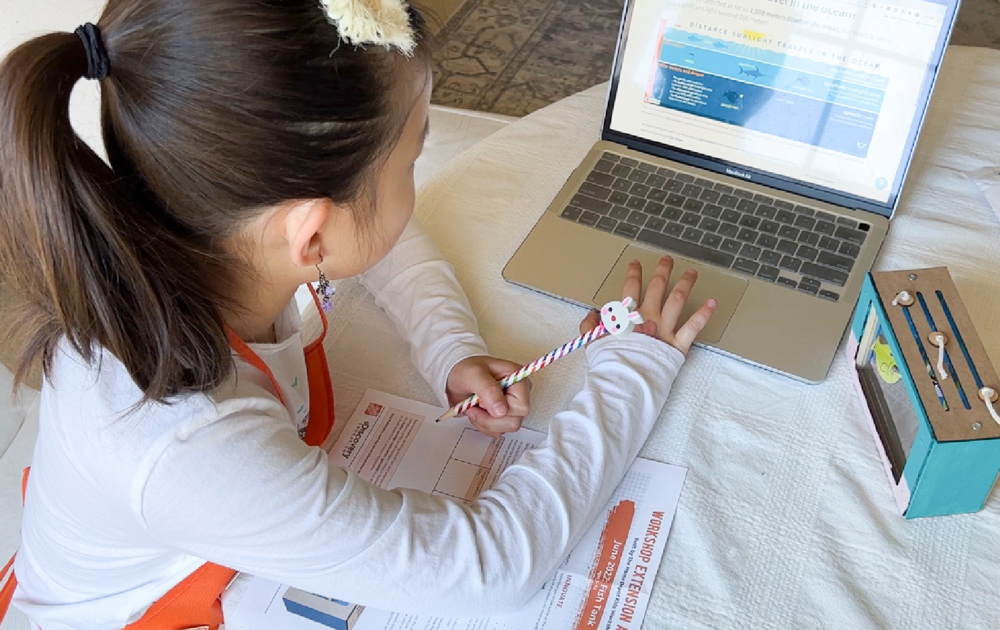
The Home Depot Kids Workshop comes with a workshop extension activity. This gives your child the opportunity to learn more and enhance their experience with the project. For this project, we researched the three zones in the ocean using the National Ocean Service's website.
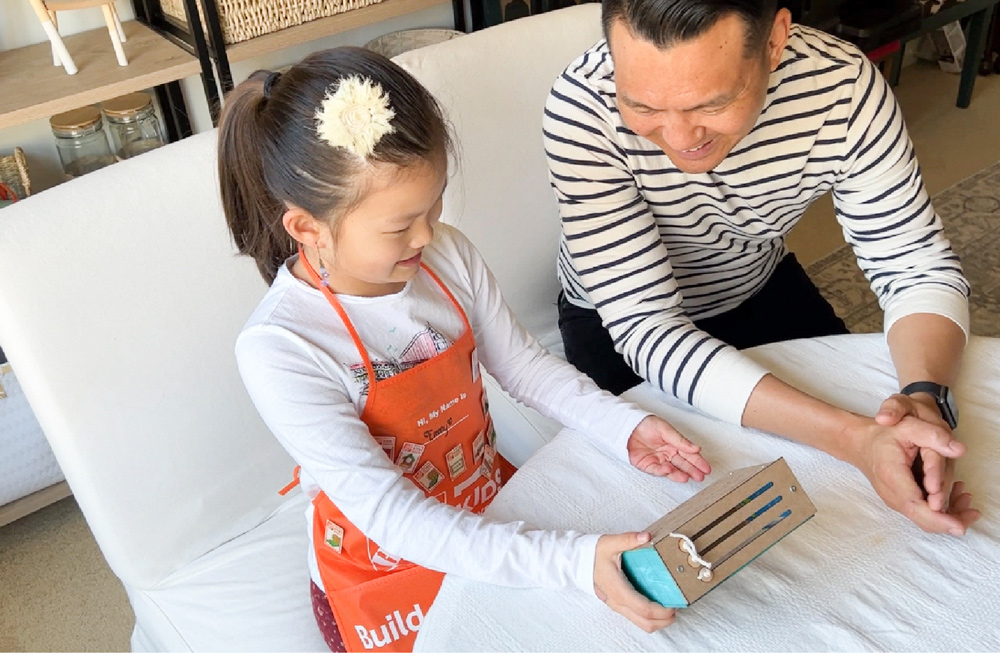
When your fish tank is complete, take a moment to share it with your parents (or another important adult in your life) and explain what you’ve created.
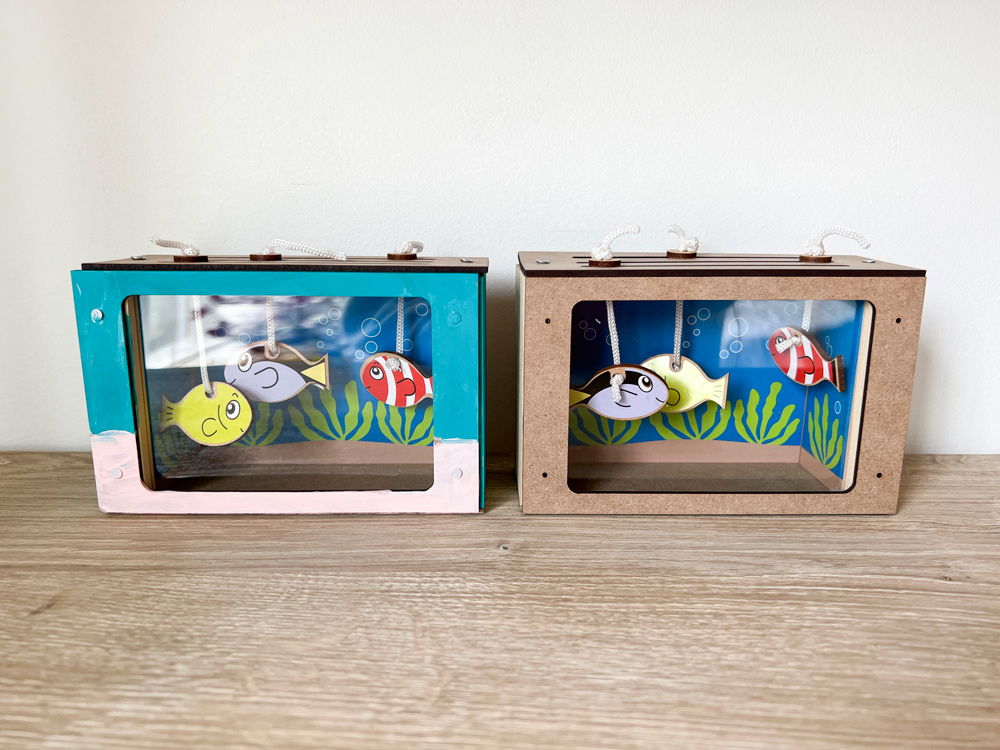
Make sure you give your child the certificate of achievement along with their pin for completing this Kids Workshop! We hope you’ll join us this month to build your own fish tank. We had so much fun with this project and know you will, too. All items can be found at Homedepot.com/kids.
This post was created in partnership with The Home Depot. The author may have received compensation for this article and associated images or video, potentially in the form of products and/or services. All expressed opinions and experiences are the author’s own words.






